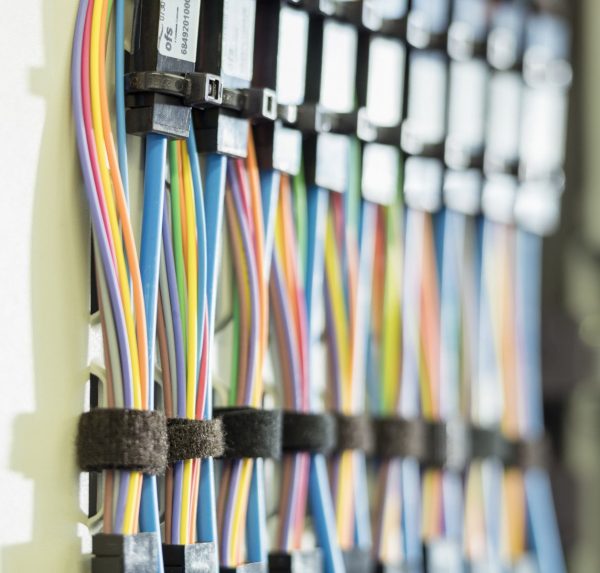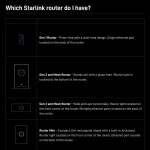Chip Shortage Delays Hit Openreach Gfast and Ethernet Installs

New UK customers of Openreach’s hybrid fibre G.fast broadband ISP and specific optical fibre (OSEA 6500 Filter Connect and OSEA Lite) products may face delays in getting related services provisioned, which comes after the operator suffered a shortage of electronic components in its supply chain (e.g. modems).
At this point we’ll assume that most of our readers will already be familiar with the ongoing issues around the global shortage of electronic components, particularly semiconductor chips, as it’s something that we’ve covered before (here) and is often in the news. So far, Openreach has done quite well to manage the impact of this, but problem areas do still exist and that’s true for other UK network operators too.
As a result of these issues, Openreach recently applied a status of Matters Beyond Our Reasonable Control (MBORC) for provision activities relating to optical services and G.fast. We should point out that the G.fast side of this only relates to installations where the modem is provided by Openreach itself. Some ISPs, such as BT, won’t be impacted by the latter because their bundled SmartHub router includes its own G.fast modem.
Advertisement
The MBORC statement was originally issued on 10th October 2021, although we only recently started to notice it after several UK ISPs began to inform their customers about delays to their service provisions (Openreach doesn’t usually publish MBORC notices in public).
Original MBORC Statement
Over the past few months, Openreach has been working closely with our key suppliers, in order to reduce the impact of this shortage on delivery performance for Optical Spectrum Extended Access (OSEA) and for Gfast, where modems are provided by Openreach.
However, whilst we have had success with this approach, the scale of the reduction of component supply is now impacting our ability to maintain planned delivery dates, and also to set delivery dates for new orders.
We’ll continue to monitor the situation and look to remove MBORC as soon as we are able
Declaring MBORC means, among other things, that Openreach cannot be held to contractual delivery requirements (Service Level Agreements) for these services. According to a related statement from Neos Networks: “Openreach are taking action to reduce any delays, but they are currently running on average 30% behind target in planning, and in certain locations it can be significantly greater than this.”
We have asked Openreach to provide an update on the situation and will report back once we have that.
Mark is a professional technology writer, IT consultant and computer engineer from Dorset (England), he also founded ISPreview in 1999 and enjoys analysing the latest telecoms and broadband developments. Find me on X (Twitter), Mastodon, Facebook, BlueSky, Threads.net and Linkedin.
« Starlink Seeks LEO Satellite Spectrum Boost from Vodafone UK























































I thought they’d put a stop on all G.Slow installations now.
They did, it even says this in the article.
it says “at scale”. I thought it was all of them.
Openreach retain G.fast as part of their toolkit and may make specific targeted deployments, if they so wish (we have seen the odd one this year). But much like VDSL2 Vectoring, for all intents and purposes G.fast is no longer being deployed in any big way.
I suspect there are occasions where a high percentage of properties on a cabinet can get good G.Fast speeds as they are close by and OR is taking advantage of it.
They may not be *growing* the G.Fast footprint, but they’re certainly taking new orders within that footprint.
@NE55
“They may not be *growing* the G.Fast footprint, but they’re certainly taking new orders within that footprint.”
Exactly
Openreach should tell ISPs to use Zyxel G.fast router as it pretty very good as I own one of it and it work well with full stats from it with third party software called dslstats.
Here is my full stats from my G.fast Zyxel router:
============================================================================
xDSL Training Status: Showtime
Mode: G.fast Annex A
Traffic Type: PTM Mode
Link Uptime: 31 days: 10 hours: 23 minutes
============================================================================
xDSL Port Details Upstream Downstream
Line Rate: 39.827 Mbps 241.883 Mbps
Actual Net Data Rate: 39.657 Mbps 241.399 Mbps
Trellis Coding: ON ON
SNR Margin: 3.0 dB 3.0 dB
Actual Delay: 0 ms 0 ms
Transmit Power: 4.0 dBm 0.0 dBm
Receive Power: 4.7 dBm 3.0 dBm
Actual INP: 607.0 symbols 550.0 symbols
Attainable Net Data Rate: 38.007 Mbps 240.880 Mbps
============================================================================
I still got Openreach G.fast Modem never use it. I put it away in the cupboard because it can’t get any stats from it. Useless. I use my own Zyxel G.fast router as it nice to have one wall socket from it with a spare socket for hoover the hallway. Openreach Modem is a waste of time cos you have to use both wall sockets one from the modem and one for the router – why use two for?
I know of a place where G.Fast got rolled out using an FTTdp configuration to a small place with only 4 houses in the middle of nowhere. Each house got upgraded to a 500mb/s connection from a very basic ADSL connection.
Not by OpenReach they didn’t.
OpenReach don’t even sell 500Mb/s on G.Fast.
OpenReach have installed mini DSLAM’s for VDSL2 in the past.
They did similar as part of the G.Fast trials.
They were limited to 330Mb/s though (as that’s the highest available).
Openreach should uncapped G.fast speed limit. If the customer end getting 650Mbps down and 75Mbps up then why wouldn’t the customer can have 650/75 then? If the cabinet are within 50m or less to benefit this speed.
Increase in fault rates and problems to ISPs in how to pitch products. Much the same reasons as VDSL was capped at 80/20.
Not changing. Openreach are building out full fibre as most know so no point in messing with what are soon to be obsolete products.
Just an excuse to not fulfill contractual obligations don’t believe a word,
Yeah believe ‘Roge’ rather than hundreds of independent media outlets reporting the global chip shortage.